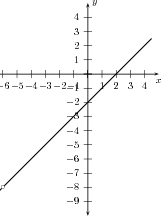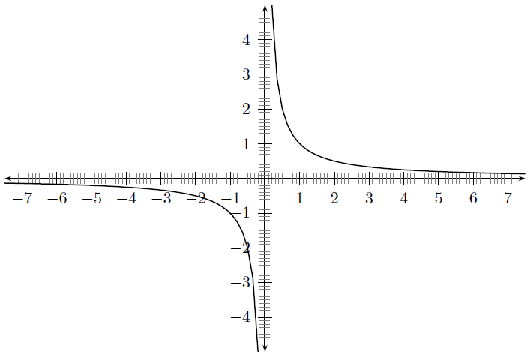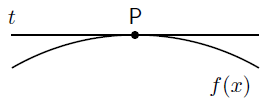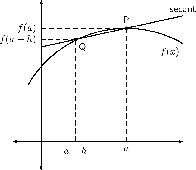| << Chapter < Page | Chapter >> Page > |

We say that a function is continuous if there are no values of the independent variable for which the function is undefined.
We can now introduce a new notation. For the function , we can write: This is read: the limit of as tends to -6 is 8.
If , determine:
| f(-0.1) | |
| f(-0.05) | |
| f(-0.04) | |
| f(-0.03) | |
| f(-0.02) | |
| f(-0.01) | |
| f(0.00) | |
| f(0.01) | |
| f(0.02) | |
| f(0.03) | |
| f(0.04) | |
| f(0.05) | |
| f(0.1) |
What do you notice about the value of as gets close to 0.
Summarise the following situation by using limit notation: As gets close to 1, the value of the function gets close to 3.
This is written as: in limit notation.
We can also have the situation where a function has a different value depending on whether approaches from the left or the right. An example of this is shown in [link] .

As from the left, approaches . As from the right, approaches . This is written in limits notation as: for approaching zero from the left and for approaching zero from the right. You can calculate the limit of many different functions using a set method.
Method:
Limits: If you are required to calculate a limit like then:
Determine
There is nothing to simplify.
There are no terms to cancel.
Determine
There is nothing to simplify.
There are no terms to cancel.
Determine
The numerator can be factorised.
can be cancelled from the numerator and denominator.
In Grade 10 you learnt about average gradients on a curve. The average gradient between any two points on a curve is given by the gradient of the straight line that passes through both points. In Grade 11 you were introduced to the idea of a gradient at a single point on a curve. We saw that this was the gradient of the tangent to the curve at the given point, but we did not learn how to determine the gradient of the tangent.
Now let us consider the problem of trying to find the gradient of a tangent to a curve with equation at a given point .

We know how to calculate the average gradient between two points on a curve, but we need two points. The problem now is that we only have one point, namely . To get around the problem we first consider a secant to the curve that passes through point and another point on the curve . We can now find the average gradient of the curve between points and .

If the -coordinate of is , then the -coordinate is . Similarly, if the -coordinate of is , then the -coordinate is . If we choose as and as , then: We can now calculate the average gradient as:
Now imagine that moves along the curve toward . The secant line approaches the tangent line as its limiting position. This means that the average gradient of the secant approaches the gradient of the tangent to the curve at . In [link] we see that as point approaches point , gets closer to 0. When , points and are equal. We can now use our knowledge of limits to write this as:
and we say that the gradient at point is the limit of the average gradient as approaches along the curve.
Khan academy video on calculus - 1
For the function , determine the gradient of the tangent to the curveat the point .
We know that the gradient at a point is given by: In our case . It is simpler to substitute at the end of the calculation.
The gradient of the tangent to the curve at is 3.
For the function , determine the gradient of the tangent to curve at the point .
We know that the gradient at a point is given by: In our case . It is simpler to substitute at the end of the calculation.
The gradient of the tangent to the curve at is .
Determine the following

Notification Switch
Would you like to follow the 'Siyavula textbooks: grade 12 maths' conversation and receive update notifications?